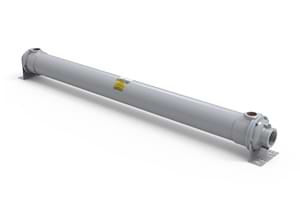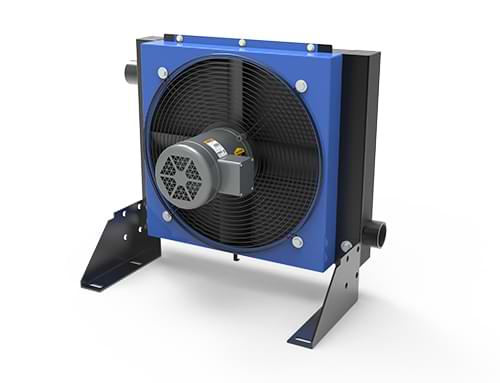Aftercoolers for Dry Ice Blasting
This process involves accelerating dry ice pellets to high speeds using compressed air, which are then directed at a surface to remove contaminants like grease, dirt, paint, or mold. Upon impact, the dry ice sublimates—transitioning directly from a solid to a gas—lifting away the unwanted material without damaging the underlying substrate. This unique characteristic makes it a versatile solution across various industries.
Applications
- Moisture Removal: ftercoolers cool humid compressor air, removing water vapor to prevent freezing in dry ice blasting systems. Moisture can clog hoses, disrupting pellet flow and reducing efficiency. Dry air ensures clean sublimation, lifting contaminants effectively for a residue-free finish, critical for consistent performance.
- Equipment Longevity: Wet air corrodes blasting equipment, increasing maintenance costs. Aftercoolers deliver dry air, preventing rust and wear in hoses and nozzles. This extends equipment life, cuts repair expenses, and ensures reliability, vital for industries like manufacturing where downtime impacts production schedules.
- Improved Precision and Power: Aftercoolers cool air, keeping dry ice pellets solid until impact. Warm, moist air softens pellets, reducing cleaning power. Dry, cool air maintains pellet velocity and precision, essential for delicate surfaces in aerospace or electronics, ensuring effective contaminant removal without substrate damage.
Water Cooled Aftercoolers
Compressor Cooling
- Fixed or Removable Tube Bundles
- Material Options Available
- Standard and Custom Options

Air Cooled Aftercoolers
Compressor Cooling
- Use Ambient Air to Cool
- Variety of Motor Options
- Standard Pressures of Up To 250 psi

The applications of dry ice blasting are extensive, spanning industrial, commercial, and even delicate restoration projects. In manufacturing, it’s widely used to clean machinery, molds, and production equipment without the need for disassembly or harsh chemicals, reducing downtime and maintaining equipment integrity. The automotive and aerospace sectors employ it to remove coatings, adhesives, and residues from parts, ensuring precision and safety. In food processing, dry ice blasting sanitizes equipment without water, eliminating the risk of bacterial growth associated with wet cleaning methods. Additionally, it’s valuable in historical preservation, gently cleaning fragile surfaces like statues or wooden structures without abrasion. Its ability to clean electrical components without conductivity risks further broadens its utility.
Central to the effectiveness of dry ice blasting is the role of compressed air, which propels the dry ice pellets. However, the quality of this air is critical, and this is where compressed air aftercoolers come into play. Aftercoolers are heat exchangers that cool the hot, moist air discharged from an air compressor, reducing its temperature and removing water vapor before it enters the blasting system. Without an aftercooler, the compressed air remains warm and humid, potentially causing several issues. Moisture in the air can lead to clogs in the blasting equipment as it freezes upon contact with the subzero dry ice, disrupting the flow of pellets and reducing efficiency. Furthermore, wet air can compromise the sublimation process, leaving residue or frost on surfaces, which defeats the purpose of a clean, dry finish.
The importance of aftercoolers extends beyond preventing clogs. By delivering cool, dry air, they enhance the consistency and force of the blasting process, ensuring the dry ice pellets maintain their solid state until impact. This maximizes the kinetic energy transfer and cleaning power. Aftercoolers also protect the equipment itself, minimizing corrosion and wear caused by moisture buildup over time. In industries where precision and reliability are paramount—such as aerospace or electronics—this can translate to significant cost savings and improved outcomes.


